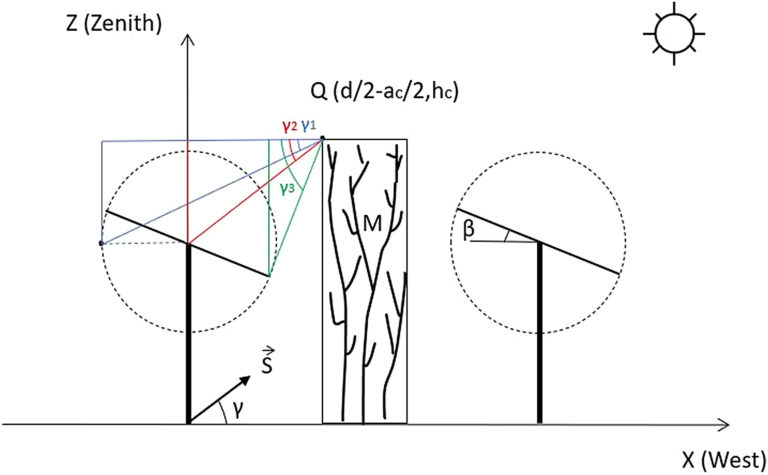Researchers from the University of Cordoba in Spain have come up with a new way to integrate tree-based agriculture with solar power plants based on north-south-oriented, single-axis trackers. Their proposed methodology focuses on the cultivation of olives, almonds, peaches, cherries, apples, and pears.
“This agricultural model would make it possible to reconcile tree cultivation with agrivoltaics, until now limited to low-rise crops such as cereals or lettuce,” the scientists said. “This circumstance could be of great interest in countries where agriculture is one of the fundamental economic activities.”
Their model specifically applies to an existing PV plant with horizontal trackers on a north-south axis, with hedgerow trees between the module rows. Under the proposed system configuration, the tracking systems would improve power yield by eliminating the shadows of the crops on the solar panels.
The Spanish group identified an ideal geometric space between the module rows for crops to avoid affecting the irradiance capture or the tracking strategy. Through a tracking-backtracking algorithm, the team was able to find the most suitable solar module tilt angle for different solar array configurations.
“It is recommended that the manager of any PV plant with N-S solar trackers, following the proposed methodology, obtains the corresponding isolines of radiation losses,” the academics said. “Thus, based on this graphic, the PV plant manager can evaluate the convenience of converting a PV plant to an agrivoltaic plant with hedge crops also oriented in the N-S direction.”
They simulated the proposed approach for an agrivoltaic plant with north-south horizontal single-axis solar trackers and an olive grove in a hedge in Cordoba. They said they were able to improve the land equivalent ratio (LER) by between 28.9% and 47.2%.
They presented their findings in “Design and analysis of a tracking/backtracking strategy for PV plants with horizontal trackers after their conversion to agrivoltaic plants,” which was recently published in Renewable Energy.
“Progress achieved in this study (is) very significant as the natural evolution of the implementation of PV power plants with single-axis trackers will force, over the coming years, the search for solutions to their conversion to agrivoltaic facilities,” they concluded.
This content is protected by copyright and may not be reused. If you want to cooperate with us and would like to reuse some of our content, please contact: editors@pv-magazine.com.




1 comment
By submitting this form you agree to pv magazine using your data for the purposes of publishing your comment.
Your personal data will only be disclosed or otherwise transmitted to third parties for the purposes of spam filtering or if this is necessary for technical maintenance of the website. Any other transfer to third parties will not take place unless this is justified on the basis of applicable data protection regulations or if pv magazine is legally obliged to do so.
You may revoke this consent at any time with effect for the future, in which case your personal data will be deleted immediately. Otherwise, your data will be deleted if pv magazine has processed your request or the purpose of data storage is fulfilled.
Further information on data privacy can be found in our Data Protection Policy.